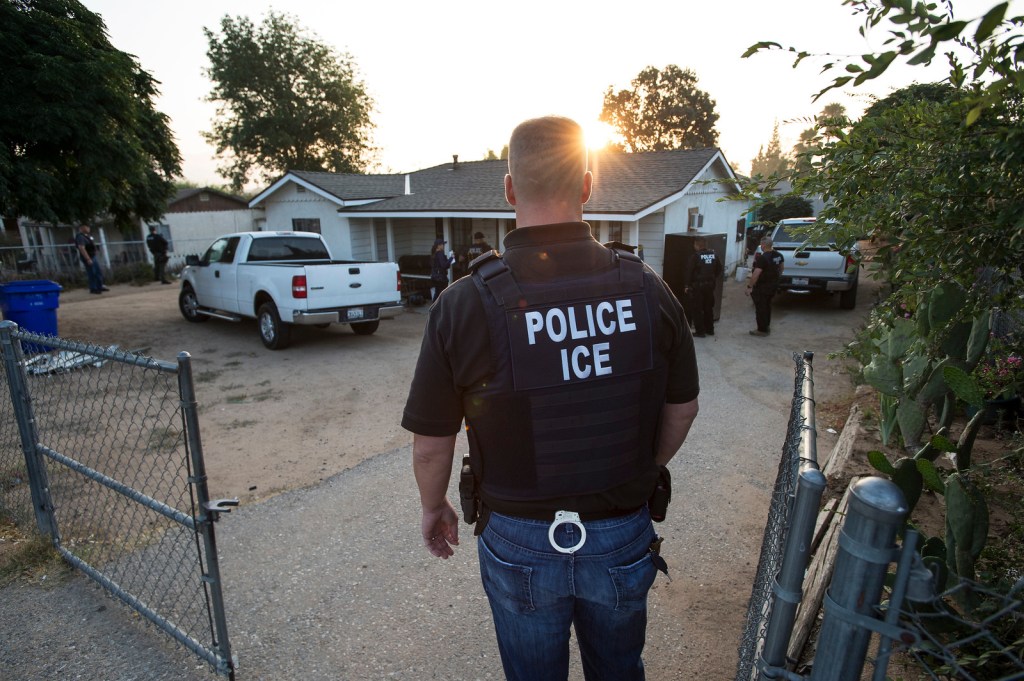
The Trump administration has placed San Bernardino and Riverside counties on a list of sanctuary jurisdictions that it says are defying federal immigration law, a move local officials say is incorrect.
Spokespeople for both counties denied the allegation that either has worked to undermine enforcement of immigration laws.
On April 28, Trump signed Executive Order 14287, “Protecting American Communities from Criminal Aliens.”
“Some state and local officials nevertheless continue to use their authority to violate, obstruct, and defy the enforcement of Federal immigration laws,” the order reads in part. “This is a lawless insurrection against the supremacy of Federal law and the Federal Government’s obligation to defend the territorial sovereignty of the United States.”
Among other provisions, the order requires the federal government to draw up a list of state and local jurisdictions that federal officials say are “obstructing” federal immigration enforcement.
A month after the order was signed, on Thursday, May 29, the Department of Homeland Security got specific, publishing a list of more than 500 jurisdictions nationwide that it says are obstructing federal immigration enforcement efforts.
On the department’s list of alleged sanctuary jurisdictions: The state of California and the counties of Riverside and San Bernardino.
They’re not alone — 48 out of California’s 58 counties are listed as sanctuary jurisdictions according to DHS. Only Alpine, Contra Costa, Fresno, Inyo, Kern, Kings, Marin, Napa, Orange and Placer counties are exempted.
The Inland Empire cities of Cathedral City, Coachella and Palm Springs are among 63 California cities on the list.
“Designation of a sanctuary jurisdiction is based on the evaluation of numerous factors, including self-identification as a sanctuary jurisdiction, noncompliance with Federal law enforcement in enforcing immigration laws, restrictions on information sharing, and legal protections for illegal aliens,” a statement issued Friday by DHS reads in part. “The list is actively reviewed, will be regularly updated, and can be changed at any time. President Trump and Secretary Noem have been clear: sanctuary jurisdictions should immediately cease violation of Federal law and cooperate with law enforcement.”
Federal departments and agencies will then suspend federal grants and contracts going to those jurisdictions and suspend or cancel them, according to the order. Other “legal remedies and enforcement measures” may also be pursued by DHS or U.S. Attorney General Pam Bondi.
In 2017, then-Gov. Jerry Brown signed Senate Bill 54, the “California Values Act,” into law. The law prohibits state and local law enforcement agencies from making their resources available to federal immigration enforcement agencies, except in the case of violent immigrants. In June 2020, the U.S. Supreme Court declined to hear a challenge brought against the case by the first Trump administration.
On Friday, Gov. Gavin Newsom’s office sent a letter to Noem, citing 2019 and 2020 court rulings that said SB 54 does not conflict with the state’s obligations under federal law and that withholding grant money as a result is illegal.
“Based on the court decisions discussed above, I request that you update the list to remove California and the California counties and cities whose policies align with those upheld by the courts,” the letter from David Sapp, Newsom’s legal affairs secretary, reads in part.
In January, the Riverside County Board of Supervisors voted to create a web page of resources on immigration issues, request looking at local Deferred Action for Childhood Arrivals, or DACA, participants and other “law-abiding” undocumented immigrants, and seek funding to support immigrants facing deportation proceedings.
“The County of Riverside is not a sanctuary county,” county spokesperson Brooke Federico wrote in an email Friday afternoon. “On February 4, the Board of Supervisors adopted a resolution proclaiming the county to be a vibrant, compassionate, and welcoming county for all law-abiding immigrants and refugees.”
San Bernardino County also denied that it is a sanctuary jurisdiction.
“We have not legally declared ourselves as such by adopting policies that preclude the county from enforcing federal immigration laws, inquiring as to an individual’s immigration status, or cooperating with federal immigration authorities,” county spokesperson David Wert wrote in an email Friday afternoon.
San Bernardino County complies with state and federal immigration laws as they apply to all counties and local jurisdictions and does not provide assistance to undocumented immigrants beyond what is required by state and federal law, Wert wrote.
On Thursday, DHS said it would be notifying each jurisdiction of its non-compliance with federal statutes. As of Friday afternoon, neither county had received any such notification, according to Federico and Wert.
“It’s really hard to see the motivation” in going after conservative-leaning inland California communities, said Jack Pitney, a professor of American politics at Claremont McKenna College.
Homeland Security Secretary “Kristi Noem isn’t the sharpest knife in the cabinet,” he said.
Since returning to office, Trump has conducted an unprecedented immigration enforcement campaign. The White House has said it intends to deport 1 million people a year. According to the administration, between Trump’s inauguration on Jan. 20 and April 1, more than 100,000 undocumented immigrants were deported.
Staff writer Kaitlyn Schallhorn contributed to this story.
Originally Published:



